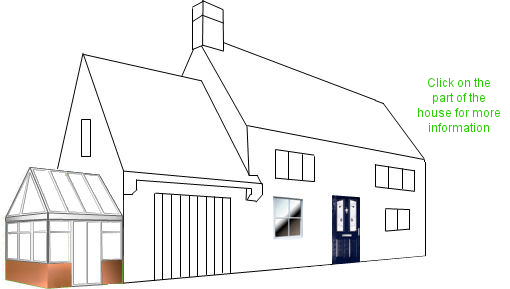|
||||||||||||||||||||||||||||||||||||||||||||||||||||||||||||||||||||||||||||||||||||||||||||||||||||||||||||||||||||||||||||||||||||||||||||||||||||||||||||||||||||||||||
  Glass (Double Glaze Units)· Energy Efficient window · U- Value · Acoustic Windows for sound reduction · Fire resistant glass
Spacer BarThe spacer bar job may seem only to separate the inner pane and outerframe but it is does a lot more. Aluminum Spacer BarThe traditional way of unitizing 2 pieces of glass is with a hollow aluminum spacer bar filled with desiccant. The Desiccant removes any moisture left when they are sealed and the inner and outer seal stops any moisture from penetrating between the pane. Double Glazing, Energy Rated, Acoustic, Secondary Glazing   When most people think of double glazing this is what they image, 2 sheets of glass in a frame. Although the double glazed or double glaze unit is the bases for most modern windows it is also more complicated than most people give it credit for. The technology was original patented in 1965. The majority of glass in the UK is produced by one of two main companies 1) Pilkington 2) Saint Gobain. Both are of similar quality and produce hard and soft coat options that sealed unit manufactures turn in to Double glaze units from windows. The combination of inner and outer skin and spacer bar can produce literally thousands of different units for different applications such as: -
Double Glaze units (DGU) or Insulated Glass Units (IGU) Download Free PDF Energy rated windows Ebook produced by the BFRC. Click here to Download
Aluminum spacer bars are available in many different colours: - · Silver
· White
· Bronze
· Gold
Most units produced today are 28mm thick (Apart from conservatory roof units which are 24mm) 24 – 28mm is the optimum without being to wide to accentuate thermal transfer. However over the last 30 years of sealed unit production there are many different widths of unit installed in UK properties to produce double glaze units. The difference in widths is achieved by altering the spacer bar size ie
Warm Edge Spacer BarsWith the current drive for energy efficient windows it was obvious that using an aluminum spacerbar conducts heat from the inside to the outside, not ideal. To solve this problem manufactures started to produce what is know in the industry as a warm edge spacer or low conducting spacer. These are primarily just an extruded butane spacer bar some have polycarbonate inner from extra strength. Below is a list of the major warm edge technology available in the UK
Gas Filled Double Glaze UnitsThere are various inert gasses that sealed units are filled with below is a list Air - hermetically sealed just means “Air Tight” most DGU are filled with Air. Not very efficient and relies on the glass used for performance. Argon - Most common gas other than air as it is relatively cost effective and produces are more energy efficient windows. Argon can be added at the manufacture stage for as little as £3 a unit. However there is some argument in the industry as to how long the gas if effective before it breaks down. Quoted figures are around 1% a year dependent on gas and sealant. Krypton – This is expensive when compared to argon it also works better in smaller gaps <8mm so is often used in triple glazing. Krypton is 12 times denser than air thus is more efficient than Argon or Air. Xenon - An inert, non reactive, odorless, colourless, non toxic gas. Far more efficient than argon of xenon but due to the cost is added to less than 0.2% of double glaze units manufactured in the UK |
||||||||||||||||||||||||||||||||||||||||||||||||||||||||||||||||||||||||||||||||||||||||||||||||||||||||||||||||||||||||||||||||||||||||||||||||||||||||||||||||||||||||||
  General Information How to Use Glass Windows Doors Conservatories Tesco Windows
Government Grants
|
||||||||||||||||||||||||||||||||||||||||||||||||||||||||||||||||||||||||||||||||||||||||||||||||||||||||||||||||||||||||||||||||||||||||||||||||||||||||||||||||||||||||||
 (“A”, “B” or “C” Rated units)
(“A”, “B” or “C” Rated units)





 What GRANTS are available from the Government to help towards the cost of new Windows
What GRANTS are available from the Government to help towards the cost of new Windows
